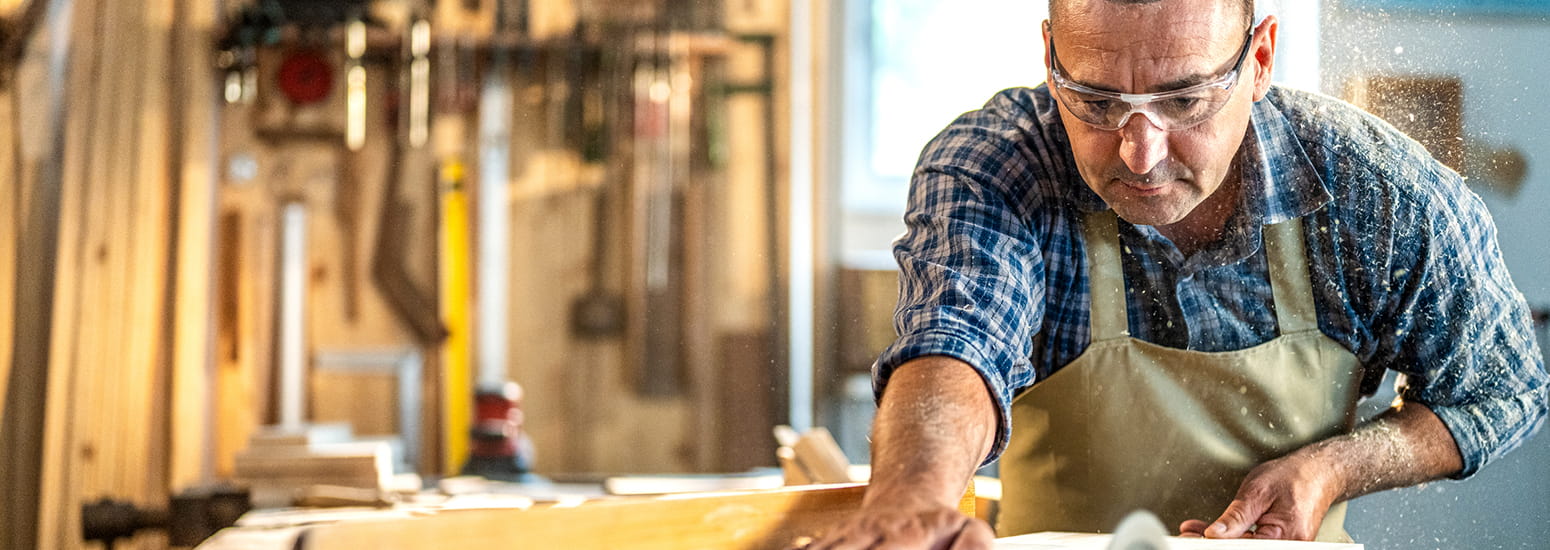Asset values: Don’t take the risk of being underinsured
Knowing how to accurately calculate the value of property assets is fundamental to getting the correct insurance cover to protect what’s most important. This is especially important for Australian small and medium businesses as we move into bushfire, storm and cyclone season.
QBE’s Repair Quality Service Manager Peter Pearce shares his insights and tips about how to calculate asset values.
What are asset values?
An asset value is an estimated value of an asset. A commercial policy would include the building and its inclusions – such as fittings and equipment – plus what’s on and below the ground.
Farm assets could include outbuildings for commercial purposes.
Assets that aren’t deemed important can be overlooked. This can include a three-phase connection to power machinery, additional water mains and underground infrastructure.

A domestic policy would include the property and all its improvements, including extensions, decks, solar panels and more. Finishes should also be taken into account. For example, a marble benchtop would cost more to replace than laminate. The quality of the build is important.
Contents can also be added.
“Consider what everything would cost to replace,” says Pearce.
Why are asset values important?
After a big event, customers want to get back to the position they were in beforehand, which is why nominating the correct sum insured on your property is so important.
A sum insured should reflect what it would cost to rebuild or replace at today’s prices and get you back to the position the business was in before loss, says Pearce.
Needing to claim can be very stressful and being underinsured only adds to that stress, he says.
“It’s always extremely difficult to have underinsurance conversations with customers, but sadly it does happen, especially in the aftermath of catastrophe season, including bushfire losses,” says Pearce. “We want to avoid these situations at all costs which is why it’s so important that both brokers and customers understand some of the detail about calculating asset values and therefore sum insureds.”
How are asset values worked out?
Talking to customers to get a full understanding of what it would cost to rebuild a business, or home needs to be part of the process, says Pearce. It’s also always a good idea to engage an independent quantity surveyor, he says.
“A quantity surveyor is a qualified professional, who specialises in measuring buildings and estimating construction costs,” says Pearce.
Asset value checklist
- What’s the age of the property?
- What’s the building made of?
- Does the property comply with regulations? It may cost more to bring it up to code.
- How is the roof tied to the footings? This is important for cyclone-prone areas.
- If it’s an investment property, you need to consider loss of rent.
- Is there asbestos? Consider the cost to remove it. Remember, asbestos has insulation properties, so you’ll need to add insulation costs.
- Have you included fencing, driveways, paths, garages and retaining walls? Google Maps will help pinpoint structures on large properties.
- Have you included fees for quality surveyors, engineers and architects?

Property location can also impact asset values. If rebuilding needs to happen, can trucks get access? Is it a steep block? Is a crane needed? What’s the availability of tradespeople in the area? If they need to be brought in, will you need to pay for accommodation?
What are the dangers of being underinsured?
Underinsurance can be life-changing, says Pearce. If your property is underinsured, you may be forced to downsize or rebuild with inferior materials. In the worse case scenario, a business may need to close.
The flow on effect could also lead to changed financing situations and leave businesses in a vulnerable situation.
If a business doesn’t have the means to recover from an incident, profits and market share could be impacted. Business interruption is also a big factor.
Pearce recalls a bakery whose business was severely affected by a bushfire loss. “They were significantly underinsured for building and contents,” he says. “They had just won a significant award for a speciality pie product. Marketing was in full swing and turnover was through the roof. But after the fire they were forced to rebuild a much smaller property with fewer ovens. The brand suffered because they weren’t able to keep up with demand.”
In this case, the business also lost momentum and didn’t have the drive to continue. “They ended up selling the multi-million business for $300,000, which was a very sad situation,” says Pearce.
Find out more about QBE Commercial Property Insurance









